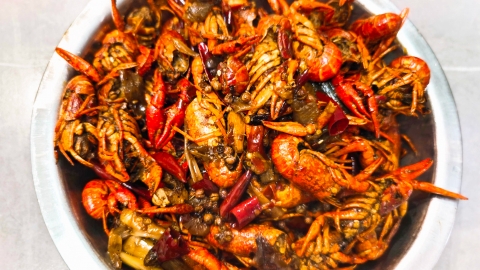Where Should You Not Eat in a Lobster?
Generally, it is not recommended to eat certain parts of a crawfish, including the head, digestive tract, shell, "crawfish fat" (yellow substance), and gills. Detailed explanations are as follows:

1. Crawfish Head
The head of a crawfish contains internal organs and digestive glands, which may accumulate heavy metals, bacteria, and parasites. Although the cooking process can kill most bacteria, heavy metals and parasites may still remain.
2. Digestive Tract ("Sand Vein")
The digestive tract of a crawfish, often appearing as a black or dark-colored line located beneath the back, may contain undigested food residues and other impurities. It should be removed before consumption.
3. Shell
The outer shell of a crawfish is primarily composed of chitin, which cannot be digested by the human body. Accidental ingestion could potentially scratch the mucous membranes of the mouth or digestive tract.
4. "Crawfish Fat" (Yellow Substance)
The yellow portion found in the crawfish's head consists of the ovary and hepatopancreas. It may contain high levels of cholesterol and pollutants, making it unsuitable for consumption.
5. Gills
The gills, located on both sides of the crawfish's head, are respiratory organs that can easily accumulate bacteria and parasites. Therefore, they are also not recommended for eating.
Individuals allergic to seafood should strictly avoid consuming crawfish to prevent allergic reactions such as rashes, itching, and difficulty breathing. It is also advisable to maintain a balanced diet and control portion sizes to avoid excessive consumption of crawfish, which contributes to maintaining overall health.






